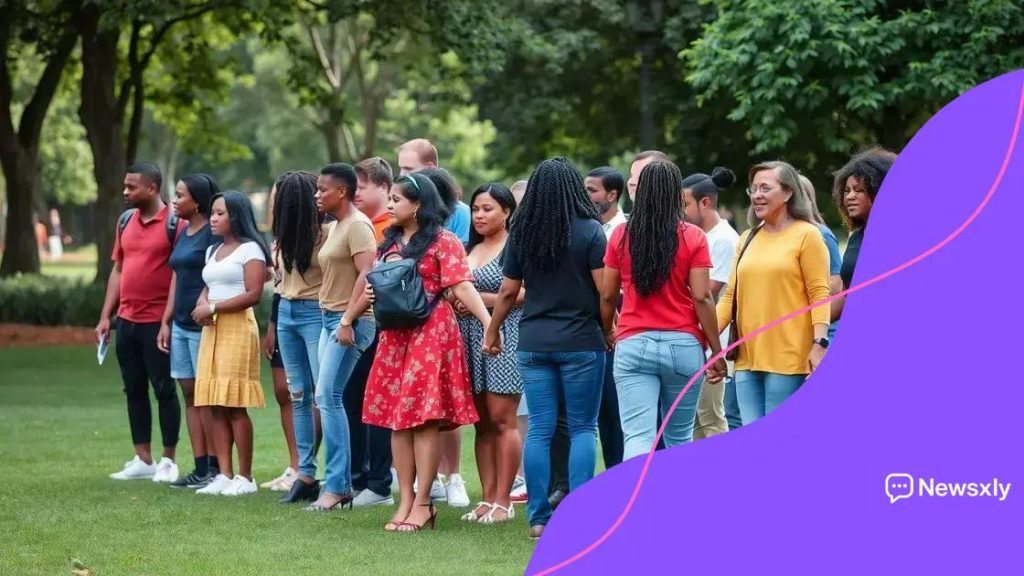Addressing racial inequality in the United States: What’s next?

Addressing racial inequality in the United States involves education, community engagement, legislative reform, and grassroots movements that collaboratively work towards creating a more equitable society for all individuals.
Addressing racial inequality in the United States remains a pressing challenge that affects countless lives. Have you ever wondered how these disparities shape our society? Let’s dive into the current landscape and explore meaningful solutions.
Understanding racial inequality in the U.S.
Understanding racial inequality in the U.S. requires examining complex societal factors. It is essential to recognize how history shapes the present. Racial inequality manifests in various forms, such as education, employment, and health care.
Key Aspects of Racial Inequality
Access to education is a major factor. Many minorities attend underfunded schools, impacting their educational opportunities. This leads to lower high school graduation rates and less access to college education.
- Underfunded school systems
- Lower college enrollment rates
- Achievement gaps among racial groups
Employment is another critical area. Racial discrimination in hiring practices can limit job opportunities for people of color. This often results in lower wages and job security.
Health Disparities
Racial inequality also affects health outcomes. Minority groups frequently experience higher rates of chronic illnesses due to lack of access to quality health care. Additionally, systemic factors like poverty contribute to these disparities.
- Higher rates of diabetes and hypertension
- Limited access to health insurance
- Impact of socioeconomic status on health
Addressing these issues is vital for building a more equitable society. By understanding racial inequality, we can work toward effective solutions that promote justice for all.
Historical context of racial disparities
The historical context of racial disparities in the United States is crucial for understanding today’s issues. This history is marked by significant events and policies that have reinforced inequalities. Slavery, for instance, laid the groundwork for systemic racism.
Key Historical Events
During the 19th century, the abolition of slavery was a pivotal moment, yet it did not erase the deep-rooted disparities. Following the Civil War, Jim Crow laws enforced racial segregation, limiting opportunities for Black Americans.
- Establishment of Jim Crow laws
- Resistance during the Civil Rights Movement
- Voting Rights Act of 1965
While progress has been made, many inequalities remain. The Great Migration saw millions of African Americans leave the South in search of better lives but still faced discrimination in northern cities. Economic barriers continued to hinder advancement.
Lasting Effects of Historical Policies
Policies like redlining created barriers to home ownership and wealth accumulation for minority families. This impacts generations, as wealth is often passed down through property ownership.
- Redlining practices in urban areas
- Disparities in access to education
- Healthcare inequalities arising from historical injustices
Understanding the history of racial disparities allows us to see why such issues persist today. By recognizing these patterns, we can work towards effective solutions and greater equality.
Current initiatives fighting inequality

Current initiatives fighting inequality are crucial for creating a fair society. Various organizations and movements are dedicated to addressing racial disparities today. These efforts focus on education, employment, and community engagement.
Educational Programs
Many programs aim to improve access to quality education. Scholarships are available for underrepresented minorities. These initiatives help pave the way for future generations.
- Mentorship programs for students
- Scholarships and financial aid
- After-school tutoring and enrichment activities
Increasing educational resources can reduce achievement gaps. Schools are partnering with local organizations to provide additional support to students.
Employment Opportunities
Employment initiatives focus on creating job opportunities and fair hiring practices. Companies are now implementing diversity hiring programs to ensure that all backgrounds are represented in the workforce. This is vital for breaking down barriers.
- Diversity and inclusion training for employers
- Internship programs designed for minority students
- Supporting small businesses in minority communities
These programs are essential, as they help level the playing field for everyone. They also promote economic growth in communities that need it most.
Community Engagement
Engaging communities in fighting racial inequality is another critical approach. Local organizations work closely with residents to identify their needs. Grassroots movements have the power to bring about significant change.
- Community workshops and forums
- Advocacy for policy changes
- Partnerships between local businesses and residents
By empowering communities, we can create a sense of ownership in the fight against inequality. Collaboration leads to stronger, more resilient neighborhoods.
Community involvement in addressing issues
Community involvement in addressing issues related to racial inequality is essential for fostering meaningful change. When communities come together, they can identify needs and advocate for solutions that best suit them. This collective action builds strength and resilience among community members.
Grassroots Movements
Grassroots movements have played a significant role in addressing social justice issues. These movements often start with local individuals who are passionate about making a difference.
- Organizing protests and rallies
- Creating awareness campaigns
- Engaging with local leaders for support
By mobilizing people, these movements can draw attention to critical issues and promote discussions around racial inequality. They empower citizens to take action in their communities.
Education and Outreach
Education is a cornerstone of community involvement. Local organizations often offer workshops that focus on important topics such as racism, equity, and justice. These programs help inform residents and prepare them for action.
- Workshops on the history of racial inequality
- Training for community organizers
- Forums for discussing local issues and solutions
By educating community members, they become equipped to advocate for themselves and their families, leading to informed decision-making and change.
Collaboration with Local Agencies
Collaboration is key to tackling racial inequality effectively. Communities often partner with local government agencies and non-profits to develop programs that address specific needs. These partnerships help leverage resources for greater impact.
- Joint initiatives to improve local schools
- Access to health care services for marginalized groups
- Community safety programs
Working together allows communities to pool their resources and expertise, making the fight against racial inequality more effective.
Future outlook on racial equality
The future outlook on racial equality is filled with mixed perspectives, shaped by current movements and ongoing challenges. As society progresses, many hope for lasting change and a more inclusive environment. However, achieving true equality requires continuous effort and commitment from everyone.
Emerging Movements
New movements are rising to promote racial equality. Activism has grown through social media, empowering younger generations to connect and advocate for change. These movements focus on awareness, education, and tangible actions.
- Global protests advocating for justice
- Online campaigns promoting inclusivity
- Support for minority-owned businesses
The visibility of these issues has increased, encouraging dialogue across various platforms. Awareness is the first step toward creating meaningful change in society.
Legislative Changes
Legislative efforts play a critical role in shaping the future of racial equality. Policymakers are beginning to address systemic issues through new laws and reforms. These changes aim to dismantle barriers that perpetuate inequality.
- Criminal justice reform to reduce racial bias
- Education policies focusing on equal opportunities
- Economic programs supporting marginalized communities
Such laws can lead to significant shifts in perceptions and treatment of racial issues, promoting more equitable systems going forward.
Empowerment and Education
Empowering individuals through education is vital for the future. Learning about history, culture, and systemic issues related to race equips people to advocate effectively for their communities. Education fosters understanding and encourages rates of empathy across diverse populations.
- Incorporating diverse perspectives in curricula
- Training for educators on cultural competency
- Community-based educational programs
Strong educational programs can pave the way for informed citizens who actively seek justice and equality in society.
The journey towards racial equality is ongoing and vital for creating a just society. Through education, community involvement, and legislative changes, individuals are empowered to make a difference. As new movements rise, they bring hope for a more inclusive future. Together, we can work towards lasting solutions that ensure everyone is treated fairly and with respect.
FAQ – Frequently Asked Questions About Racial Inequality and Solutions
What is the importance of education in addressing racial inequality?
Education plays a crucial role in promoting awareness and understanding of racial issues, empowering individuals to advocate for change within their communities.
How can community involvement make a difference?
Community involvement fosters collective action, allowing residents to address local issues, support one another, and work towards solutions that promote racial equality.
What role do grassroots movements play in the fight against inequality?
Grassroots movements raise awareness and mobilize people to advocate for change, often addressing systemic issues and advocating for justice in their communities.
How can legislation impact racial equality?
Legislation can reduce systemic barriers by implementing laws that promote fairness in education, employment, and criminal justice, thereby fostering a more equitable society.





